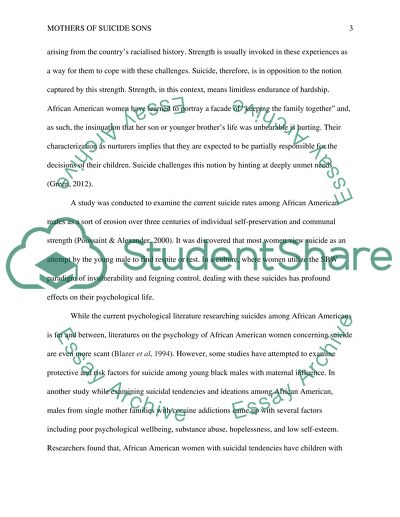Cite this document
(“Mothers of Suicide Sons Research Paper Example | Topics and Well Written Essays - 3000 words”, n.d.)
Mothers of Suicide Sons Research Paper Example | Topics and Well Written Essays - 3000 words. Retrieved from https://studentshare.org/psychology/1401141-experiences-of-african-american-women-who-have
Mothers of Suicide Sons Research Paper Example | Topics and Well Written Essays - 3000 words. Retrieved from https://studentshare.org/psychology/1401141-experiences-of-african-american-women-who-have
(Mothers of Suicide Sons Research Paper Example | Topics and Well Written Essays - 3000 Words)
Mothers of Suicide Sons Research Paper Example | Topics and Well Written Essays - 3000 Words. https://studentshare.org/psychology/1401141-experiences-of-african-american-women-who-have.
Mothers of Suicide Sons Research Paper Example | Topics and Well Written Essays - 3000 Words. https://studentshare.org/psychology/1401141-experiences-of-african-american-women-who-have.
“Mothers of Suicide Sons Research Paper Example | Topics and Well Written Essays - 3000 Words”, n.d. https://studentshare.org/psychology/1401141-experiences-of-african-american-women-who-have.


